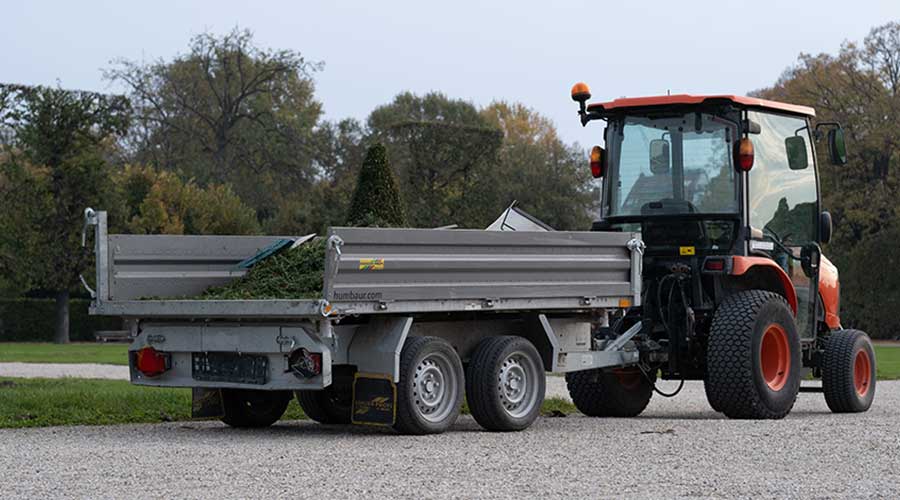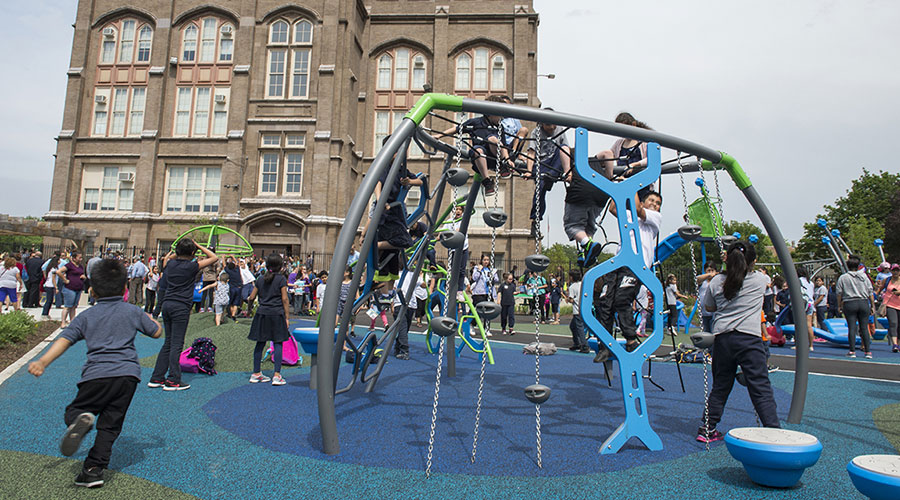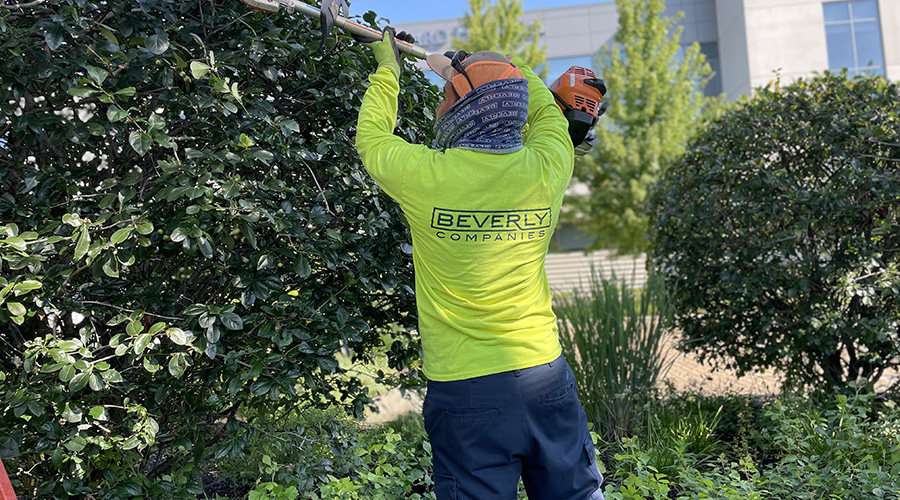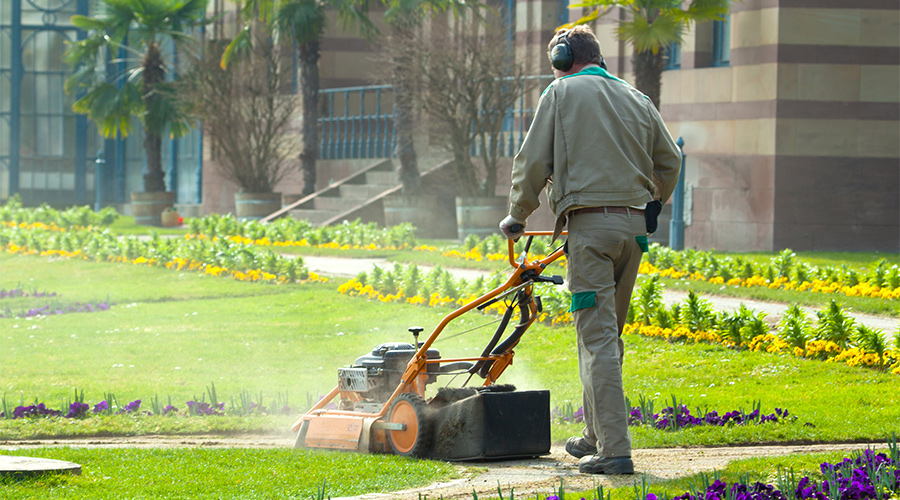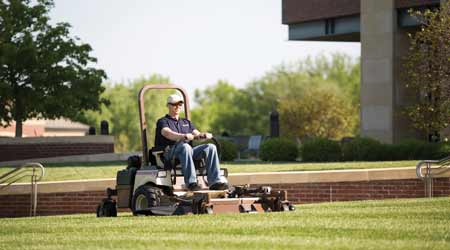 One specification strategy managers can use when selecting grounds care equipment is to base the purchasing decision on the total cost of ownership, as opposed to the amount of the monthly payments.
One specification strategy managers can use when selecting grounds care equipment is to base the purchasing decision on the total cost of ownership, as opposed to the amount of the monthly payments.Mowers: Focusing on Safety and Long-Term Performance
Managers who focus on mower safety features and functions of the mower during the specification process, can help ensure reliable long-term performance.
While equipment cost and service requirements receive much-deserved attention from managers during the mower specification process, smart managers know they also must pay attention to the safety features and functions of a mower to ensure reliable long-term performance.
The terrain a department must maintain plays a major role in the type of mower a manager selects. Each machine comes with manufacturer recommendations, and these include the safest ways to use it in various locations.
Safety equipment exists for a reason. While overly sensitive safety switches and bulky discharge chutes can be bothersome, they can ensure that operators do not lose fingers and toes while using the equipment.
One common safety issue occurs when operators fold over a mower’s rollover-protection system. It is easier to get the mower in and out of a building that way. The problem arises when operators decide to leave it down because it also is easier to mow when they do not have to pay attention to the height of the tree canopies.
But that rollover bar and the seatbelt are part of the overall protection system, along with the front end of the mower. They are designed to protect the operator if the mower rolls over — something that happens far too often, because people use these machines on steeper grades than they should.
The roll bar should always be up when the mower is in operation. Operators can prune low-hanging trees if the limbs are in the way, but they should never fold down the protection. Operators also need to understand manufacturer recommendations for safe operation on slopes, which greatly mitigates risk and liability.
The same safety principles apply to mowing around water. If a mower operator gets too close, the mower ends up in the water. The operator runs the equipment right to the water’s edge where the ground is a little too soft, and the mower ends up in the water.
For these reasons and more, operator safety involves knowing the terrain, making sure workers are well-versed in the proper use of the equipment, and avoiding operating a piece of equipment in a way it was not meant to be operated.
Operators not only should be familiar with the terrain and landscape elements, They also need to be aware of others working nearby, as well as possible passersby to whom a mower could be a safety threat.
The final safety consideration is that every mower comes with some level of recommended personal protective equipment, so managers and operators need to make sure they also follow the manufacturer’s recommendations in this area.
By being mindful of the unique conditions and requirements of turf and landscape areas, managers will be able to choose the mower that is safe, economical and the most appropriate machine for their operations.
Mike Fitzpatrick is vice president of U.S. Lawns — www.uslawns.com — which has about 260 franchise locations nationwide. He has more than 30 years of experience in the green industry.
Related Topics:











